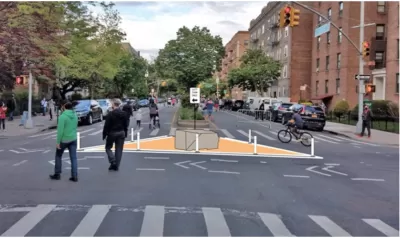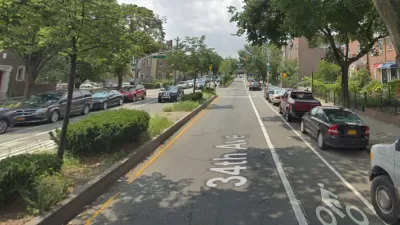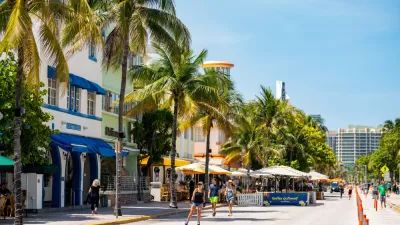An analysis of New York's 34th Avenue shows substantial reductions in crashes and injuries, strengthening the body of evidence supporting car-free streets.

A new analysis from Streetsblog shows significant improvements in pedestrian safety on car-free streets, reports Gersh Kuntzman.
The study used data from New York City's 34th Avenue open street to compare the number of reported crashes and injuries during open streets hours (8am to 8pm), finding a sharp reduction in both. The street also saw fewer crashes and injuries during non-open streets hours, when drivers seemed more likely to avoid the street or drive more carefully due to the daytime restrictions.
Open streets advocates point to this evidence as proof that permanently banning cars from roadways could even further improve pedestrian safety. As activist Luz Maria Mercado put it, "If these are the safety results we’ve gotten from cheap barricades, imagine how safe a 24/7 linear park would be." In addition to making roads safer, open streets initiatives provide much-needed safe, open space in urban communities that frequently lack adequate park space.
But despite early promises from city officials, the proposed plan for a permanent open street on 34th Avenue would not be a true linear park, but rather a combination of car-free blocks and shared streets with diverters intended to slow drivers while maintaining vehicular access.
FULL STORY: Car-Free Streets are Simply Safer, Data Continue to Show

Alabama: Trump Terminates Settlements for Black Communities Harmed By Raw Sewage
Trump deemed the landmark civil rights agreement “illegal DEI and environmental justice policy.”

Planetizen Federal Action Tracker
A weekly monitor of how Trump’s orders and actions are impacting planners and planning in America.

The 120 Year Old Tiny Home Villages That Sheltered San Francisco’s Earthquake Refugees
More than a century ago, San Francisco mobilized to house thousands of residents displaced by the 1906 earthquake. Could their strategy offer a model for the present?

In Both Crashes and Crime, Public Transportation is Far Safer than Driving
Contrary to popular assumptions, public transportation has far lower crash and crime rates than automobile travel. For safer communities, improve and encourage transit travel.

Report: Zoning Reforms Should Complement Nashville’s Ambitious Transit Plan
Without reform, restrictive zoning codes will limit the impact of the city’s planned transit expansion and could exclude some of the residents who depend on transit the most.

Judge Orders Release of Frozen IRA, IIJA Funding
The decision is a victory for environmental groups who charged that freezing funds for critical infrastructure and disaster response programs caused “real and irreparable harm” to communities.
Urban Design for Planners 1: Software Tools
This six-course series explores essential urban design concepts using open source software and equips planners with the tools they need to participate fully in the urban design process.
Planning for Universal Design
Learn the tools for implementing Universal Design in planning regulations.
Clanton & Associates, Inc.
Jessamine County Fiscal Court
Institute for Housing and Urban Development Studies (IHS)
City of Grandview
Harvard GSD Executive Education
Toledo-Lucas County Plan Commissions
Salt Lake City
NYU Wagner Graduate School of Public Service





























